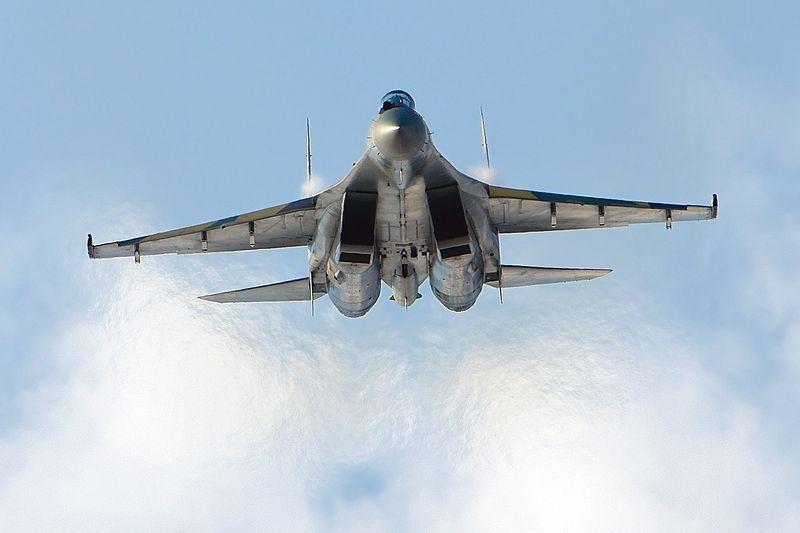China’s ADIZ gambit and the real ‘China choice’
Posted By Malcolm Davis on December 4, 2013 @ 06:00
 [1]China’s recent declaration of a new Air Defence Identification Zone (ADIZ) over the East China Sea undermines its attempts to portray its rise as ‘peaceful development towards a harmonious world’. Instead it reinforces regional concerns that China’s rapid economic development and military modernisation will allow it a greater ability to challenge an established rules-based international order, leading to a much more uncertain strategic outlook that is characterized by major power competition and a growing risk of interstate war.
[1]China’s recent declaration of a new Air Defence Identification Zone (ADIZ) over the East China Sea undermines its attempts to portray its rise as ‘peaceful development towards a harmonious world’. Instead it reinforces regional concerns that China’s rapid economic development and military modernisation will allow it a greater ability to challenge an established rules-based international order, leading to a much more uncertain strategic outlook that is characterized by major power competition and a growing risk of interstate war.
Why has China declared its East China Sea ADIZ? Analysis by CSIS [2] suggests that the establishment of China’s ADIZ in the East China Sea is a response to China’s assessment that the ‘period of strategic opportunity’, which enabled China to focus on domestic issues, is under ‘unprecedented stress’, primarily as a result of US re-balancing to Asia, and that from the perspective of Beijing, the risk of regional conflict is rising. The East China Sea ADIZ enables Beijing to be more prepared for the outbreak of military conflict, and the ability to dominate the airspace over the disputed Diaoyu/Senkaku islands is an essential enabler for the use of Amphibious, Airborne and Army Aviation Forces to rapidly seize the disputed islands, should China choose to do so. More broadly, it also reinforces China’s ability to ensure Sea Control within the ‘first island chain’, in line with a PLAN strategy of ‘offshore active defence’.
From Western perspectives [3], China’s move ‘constitutes an attempt to change the status quo in the East China Sea’ through the threatened use of force. It also sets a dangerous precedent for the use of the ADIZ as a tool of coercive force rather than a means of ensuring national security. More broadly, as Benjamin Schreer noted here last week [4], China is clearly testing Japanese and American resolve to constrain China’s growing military and strategic power. If China’s ADIZ gambit were to see a climb down from Tokyo and Washington, then this would increase the risk of a similar challenge in the South China Sea. Statements out of Beijing [5] have noted that ‘China will establish other air defence identification zones at an appropriate time after completing preparations’. Certainly China’s desire to acquire the Sukhoi Su-35 Super Flanker [6] in the near future would give Beijing the means to enforce a South China Sea ADIZ from secure land-bases. Thus what happens in the East China Sea may signal China’s next move in the South China Sea.
What implications might this crisis then have for Australia’s future defence planning leading up to the delivery of the Abbott Government’s 2015 Defence White Paper? The current crisis over the East China Sea must give rise to concerns that the 2013 Defence White Paper strategic outlook assessment, particularly as it related to China, was too optimistic. As Colin S. Gray noted in 2005 [7] ‘nothing dates more quickly than yesterday’s tomorrow’. China’s actions in this current crisis, and the broader pattern of China’s approach to managing its relations with neighbours, suggest that the next Defence White Paper should more directly recognise the risks of a rising China that is militarily powerful and assertive in terms of its use of military power.
Higher priority does need to be directed towards capability planning for a more uncertain strategic outlook and a reconsideration of the ADF Principal Tasks should be undertaken to allow for a broad range of Indo-Pacific contingencies, including the possibility of military conflict in the South China Sea. The 2013 Defence White Paper states that ‘it is in our interests that no hostile power in the Indo-Pacific is able to coerce or intimidate others through force or threat of force’—which is precisely what China is doing to Japan in the East China Sea. Putting substance behind that rhetoric in relation to the South China Sea will demand a greater emphasis on maritime power, and longer-range naval and air capabilities for the ADF, particularly those designed to challenge emerging ‘counter-intervention capabilities’. I’d argue that ‘Force 2030’ may be insufficient in the face of a rising China.
Finally, the 2015 White Paper must address the urgent requirement to match resources and strategy, and avoid the risk of a force structure ‘train wreck’ for the ADF, or Australia might be marginalised as a regional actor at possibly the most dangerous moment. So the Government must accept the argument for significantly increasing defence spending—not just state an aspiration to do so—to ensure Australia can play a significant role alongside key security partners in the face of future challenges.
Malcolm Davis is assistant professor in International Relations and post-doctoral research fellow in China-Western Relations at Bond University. Image courtesy of Wikimedia Commons [8].
Article printed from The Strategist: https://aspistrategist.ru
URL to article: /chinas-adiz-gambit-and-the-real-china-choice/
URLs in this post:
[1] Image: https://aspistrategist.ru/wp-content/uploads/2013/12/800px-Sukhoi_Su-35S_at_MAKS-2011_airshow.jpg
[2] Analysis by CSIS: http://csis.org/publication/chinas-air-defense-identification-zone-impact-regional-security
[3] From Western perspectives: http://www.state.gov/secretary/remarks/2013/11/218013.htm
[4] Benjamin Schreer noted here last week: https://aspistrategist.ru/peaceful-rise-anyone-chinas-east-china-sea-air-defence-identification-zone/
[5] Statements out of Beijing: http://news.xinhuanet.com/english/china/2013-11/23/c_132912145.htm
[6] desire to acquire the Sukhoi Su-35 Super Flanker: http://thediplomat.com/2013/11/how-china-plans-to-use-the-su-35
[7] Colin S. Gray noted in 2005: http://www.amazon.com/Another-Bloody-Century-Warfare-Phoenix/dp/0304367346
[8] Wikimedia Commons: http://en.wikipedia.org/wiki/File:Sukhoi_Su-35S_at_MAKS-2011_airshow.jpg
Click here to print.